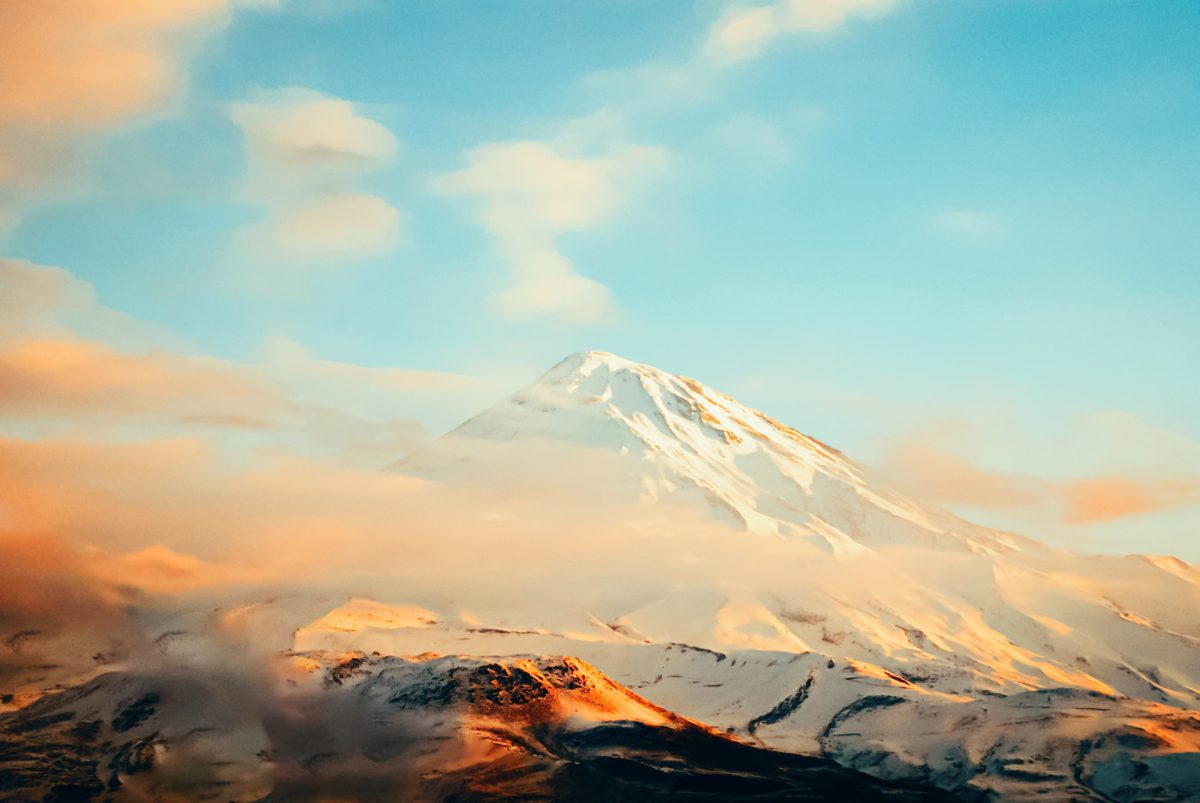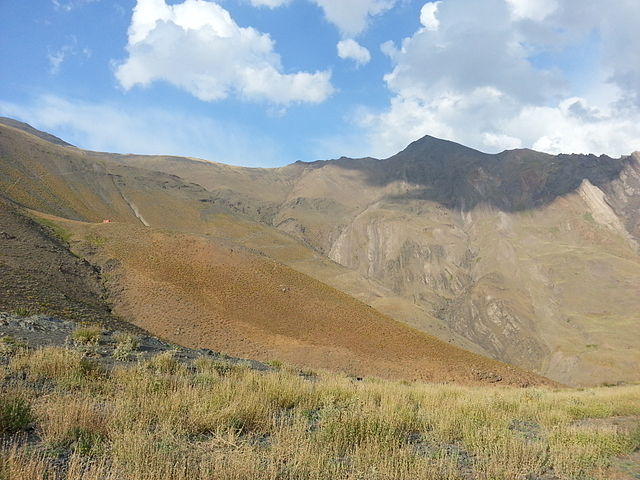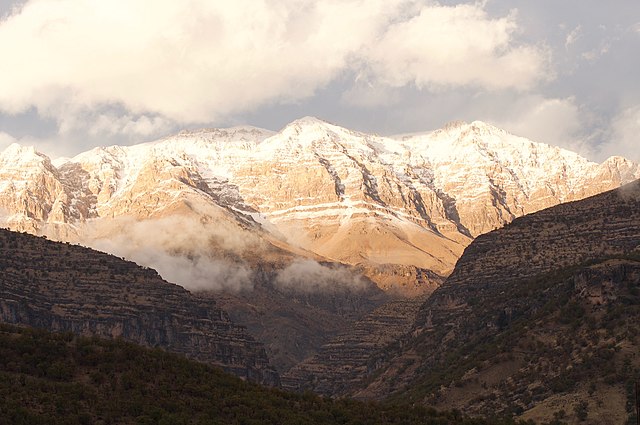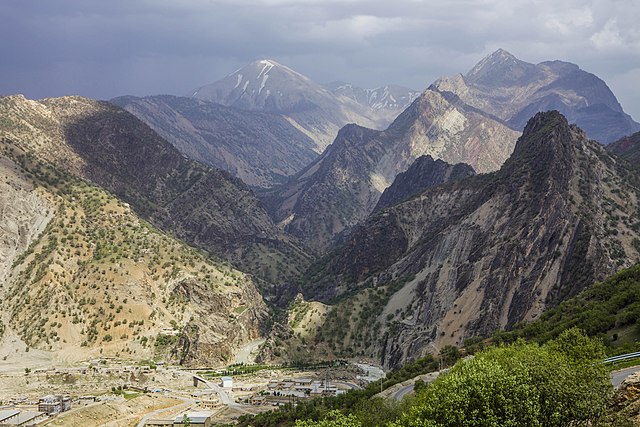Table of Contents
Take a deep breath and imagine standing on the top of a mountain, feeling the cool breeze on your face and gazing out at the awe-inspiring view of the world below. Iran, a country steeped in history and culture, is home to some of the most magnificent mountains on the planet. These stunning natural wonders offer a chance for explorers and adventure enthusiasts to challenge themselves, push their limits, and experience the ultimate adrenaline rush.
Mountains in Iran include unique features that make them stand out from the rest. From the towering Damavand Mountain to the rugged Zagros, Iran has something for everyone, whether you are a seasoned climber or a beginner looking for a new challenge.
Are you ready for an unforgettable journey? Join us and get ready to be inspired, thrilled, and amazed by the breathtaking beauty of Iran’s majestic mountains. Here is the list of the top 10 tallest mountains in Iran:
1. Mount Damavand
Atop the list of Iran’s great mountains stands the formidable Mount Damavand, reaching a staggering 5610 meters. It’s not just Iran’s highest peak but also Asia’s tallest volcano, luring Iranian trekkers with its allure. Found in northern Iran, this potential volcano boasts hot springs on its southern side, and its symmetrical shape is reminiscent of Japan’s Mount Fuji.
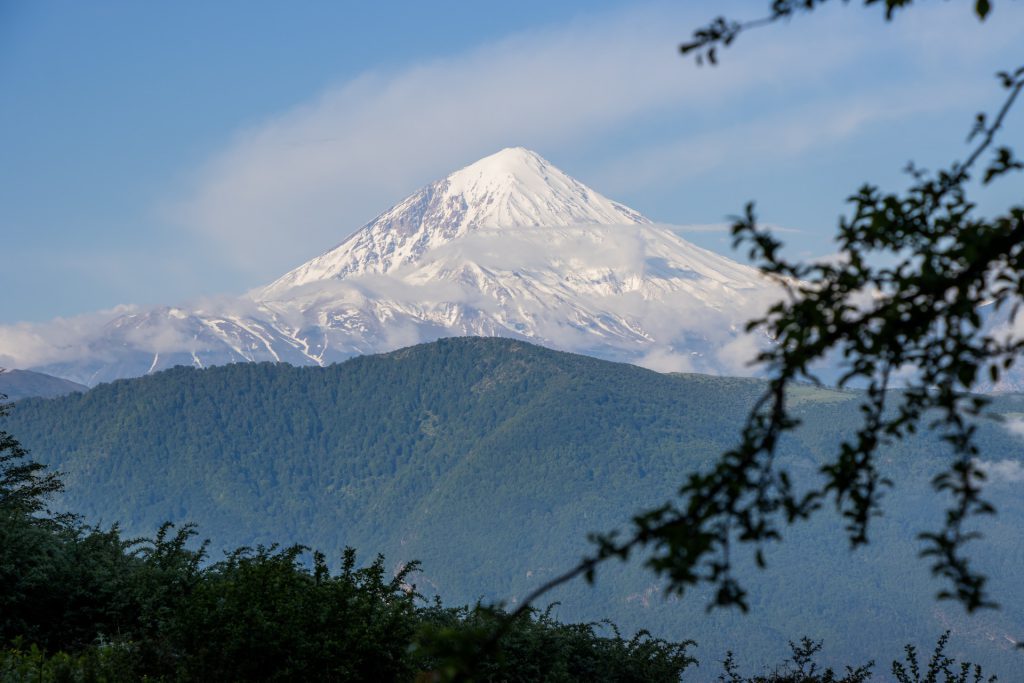
For those seeking a trek beyond 5,000 meters, Mount Damavand offers multiple paths suitable for different skills. With its distinct faces – south, north, and northeast – the mountain provides various routes to reach its peak, allowing trekkers to embrace the beauty of nature and elevation.
Mounting Damavand is considered a moderately difficult climb that can take anywhere from two to three days to complete, depending on the route chosen. For those who prefer a guided experience, joining a Mount Damavand climbing tour is a wise decision. Local tour operators can help you plan your epic journey and ensure your safety along the way.
2. Alam Kuh
Located in the Alborz range, Alam Kuh, Iran’s second-highest mountain at 4850 meters, sits in Tekht-e Soleyman in northern Iran. It has a huge wall on its north side with the toughest climbing routes, earning it the name “Iran’s K2.”
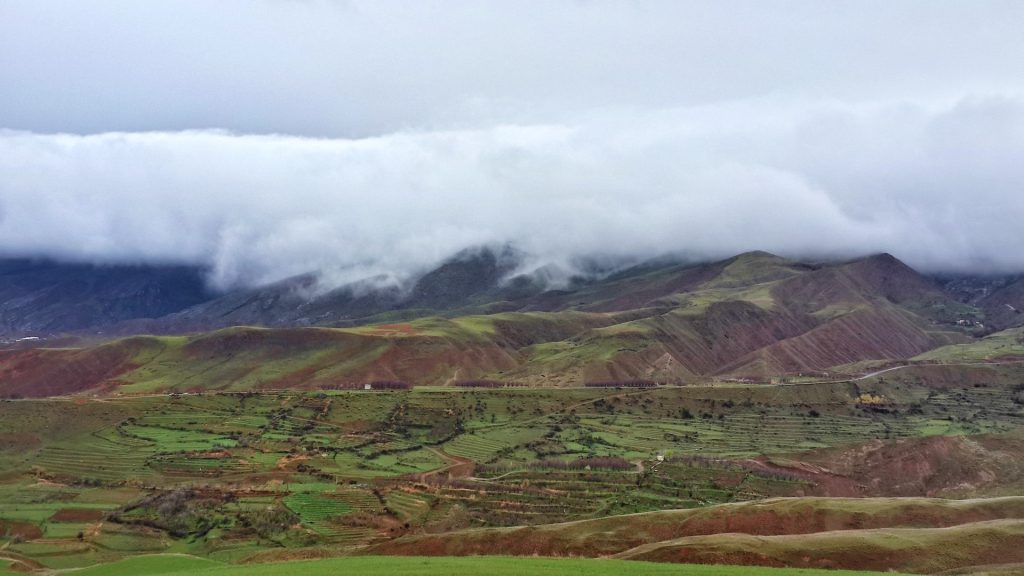
Alam Kuh offers different paths for both trekkers and climbers. Trekkers can choose the easier Hesarchal or the tougher Siahsang routes. Climbers have big wall or flank options. The Siahsang route is especially challenging, suitable only for experienced mountaineers due to its steepness and scrambles.
3. Sabalan Mountain
Mount Sabalan, Iran’s third-highest peak at 4811 meters, graces the northwest with its presence. It’s a semi-active volcano, hosting a frozen lake atop Soltan Peak that lasts most of the year. This mountain isn’t just about height; it’s a haven for sports and relaxation, thanks to its hot springs.
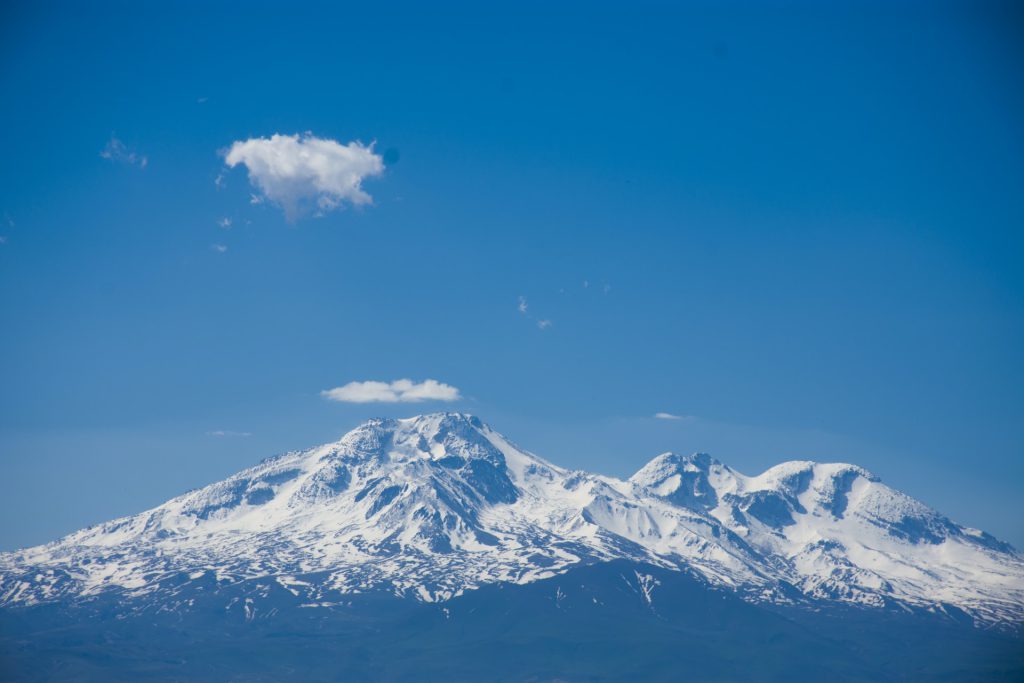
Sabalan’s charm invites exploration through three main routes: south, west, and northeast. For beginners, the northeastern route is a wise choice due to its clear path. Adventurers seeking comfort can even ride a 4WD to the shelter.
4. Hezar Mountain
Rising in southern Iran, Hezar Mountain reaches 4510 meters, the highest in Kerman Province. It holds a unique record as Iran’s lowest gravity point due to its distance from the Earth’s center. Its rich plant life earned it the name “Hazaran,” meaning thousands. You can choose a quick one-day or relaxed one-and-a-half-day ascent based on your abilities.
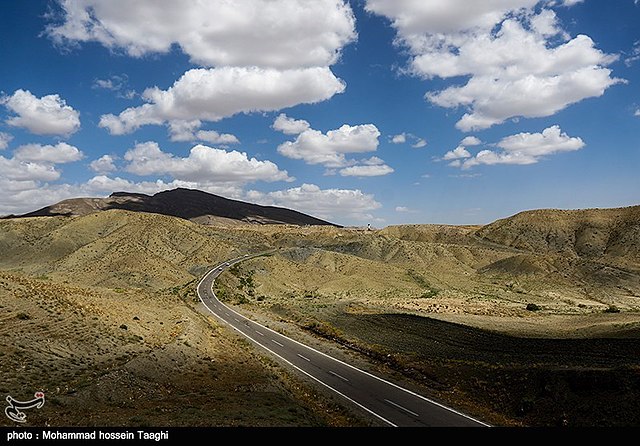
There are many routes to the top, including Babzangi and Zarrood, which has a shelter. For the Rayen Route, start near Rayen waterfall (2850m). Persian signs guide you. After a few hours, reach Hezar Shelter (3200m), offering water. Beyond the shelter, the climb continues, ending at the Taj Khoroos Rock (4000m). Beyond it, you conquer Hezar Summit, best attempted from mid-May to mid-October. Climbing in winter is possible, but prepare for heavy snow and uncertain weather.
5. Dena Mountain
Southern Iran’s Dena Mountain beckons trekkers with its vastness, rich peaks, water sources, and unique plants. Stretching 80 kilometers within Zagros, it offers over 40 peaks over 4000 meters high, spanning northwest to southeast.
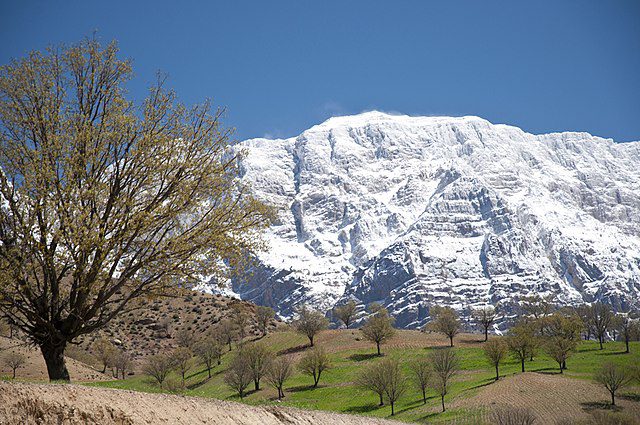
Split into central, northwestern, southeastern, and bypath regions, each has its +4000 peaks. Hoz Dal, known for its clear path and shelter, stands out. But multi-peak treks need expert navigation.
Dena’s charm includes wildlife, plants, and ample water, celebrated by its National Park status. Spring and early summer bring abundant springs and falls. The best trekking time is late spring to early summer, avoiding hazardous winters. Dena Mountains promise an adventure in nature’s lap.
Dena Mountain is known as the highest point of the Zagros Mountain Ranges in Iran and attracts climbers and skiers alike from February to April. The journey to the summit is adorned with breathtaking scenery, and the hospitable Bakhtiari nomads who live along the foothills of Dena will welcome you with open arms and a hot cup of tea.
6. Sialan Mountain
Rising proudly at 4250 meters in northern Iran, Sialan Mountain offers an exhilarating green retreat for climbers. With pathways leading to both the heavenly Daryasar Plain and the iconic Alamut Valley, this mountain presents an enticing choice for nature lovers seeking a unique ascent.
Choose from four routes to conquer Sialan’s summit. The picturesque northern route commences from Esel Mahalleh Village, while the southern route begins at Haniz Village in Alamut Valley. These diverse options allow you to tailor your adventure, whether you yearn for the serene charm of Alamut or the vibrant embrace of Dohezar Jungles. Sialan Mountain promises not just an ascent, but an immersion in nature’s captivating beauty.
7. Zard Kuh
In southwestern Iran, Zard Kuh Mountains promise a distinctive trekking experience, with their diverse peaks and bubbling springs on one side, and the summer presence of Bakhtiari nomads on the other. Among these summits, Kolonchin stands as the highest at 4200 meters, proudly earning its place among Iran’s top peaks. Embarking on the ascent involves a journey to Kuhrang town, tucked within Chaharmahal and Bakhtiari Province.
The mountains’ western terrain, characterized by deep valleys and towering walls, poses a formidable challenge for winter adventurers. However, seizing the opportunity to interact with Bakhtiari Nomads during your trek is a genuine treat. Their simple yet rich lifestyle, coupled with their gracious hospitality, adds an unforgettable dimension to your exploration of Zard Kuh’s rugged beauty.
8. Oshtorankuh
Found in Lorestan Province’s east, Oshtorankuh is a prominent part of the Zagros Mountains. Snowy peaks, deep valleys, flowing rivers, and diverse life make it special. You can see its grandness from 100 kilometers away. Named after its eight camel-like peaks, the highest is Sanboran at 4150 meters. Gahar Lake and many rivers add to its charm.
For a mountain adventure, head to Tian Village in Lorestan. Rest at Golgol Shelter or Chal Kabud Hut, based on your plan. Late spring and summer are best, as winters are harsh and snowy. Oshtorankuh is a natural wonder waiting to be explored.
9. Shirkooh Mountain
In the heart of Yazd’s desert, Shirkooh stands tall at 4075 meters, resembling a sleeping lion. Despite its desert surroundings, it’s part of the Zagros Mountains. This +4000 summit offers a moderate challenge, doable in one or two days, with shelters along the ridge and springs for water. Cell phone coverage adds convenience.
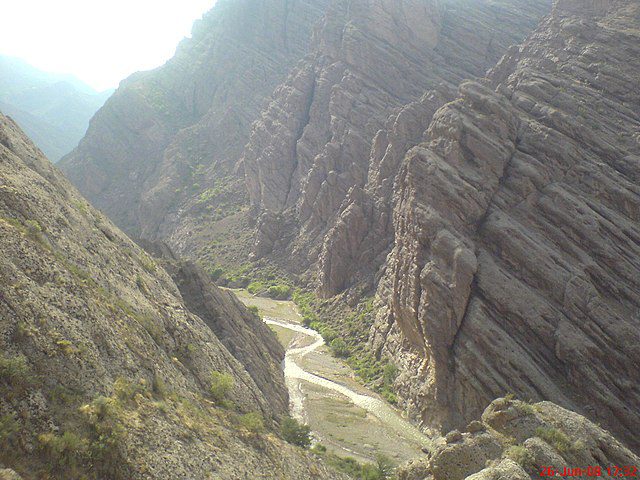
Summit routes include Darreh Soosan, Darreh Shams, Labidshir, and Abriz. To start, head to Dehbala village (2600m) in Yazd’s Taft Town. Signs guide the trail, and springs ensure water supply. A second shelter awaits near the summit, where the view is unforgettable.
While climbable year-round, spring and fall are best. Summers are hot, winters snowy. For a winter ascent, Shirkooh is a fine choice among Iran’s peaks.
10. Taftan Mountain
In southeast Iran’s Sistan and Baluchistan Province, Taftan Mountain stands as a volcanic wonder. With four peaks and three craters, its highest summit, Chehel Tan (4042m), boasts an active crater emitting sulfur vapors. The very name “Taftan” translates to “scorching” in the local tongue, aptly capturing the mountain’s fiery nature.
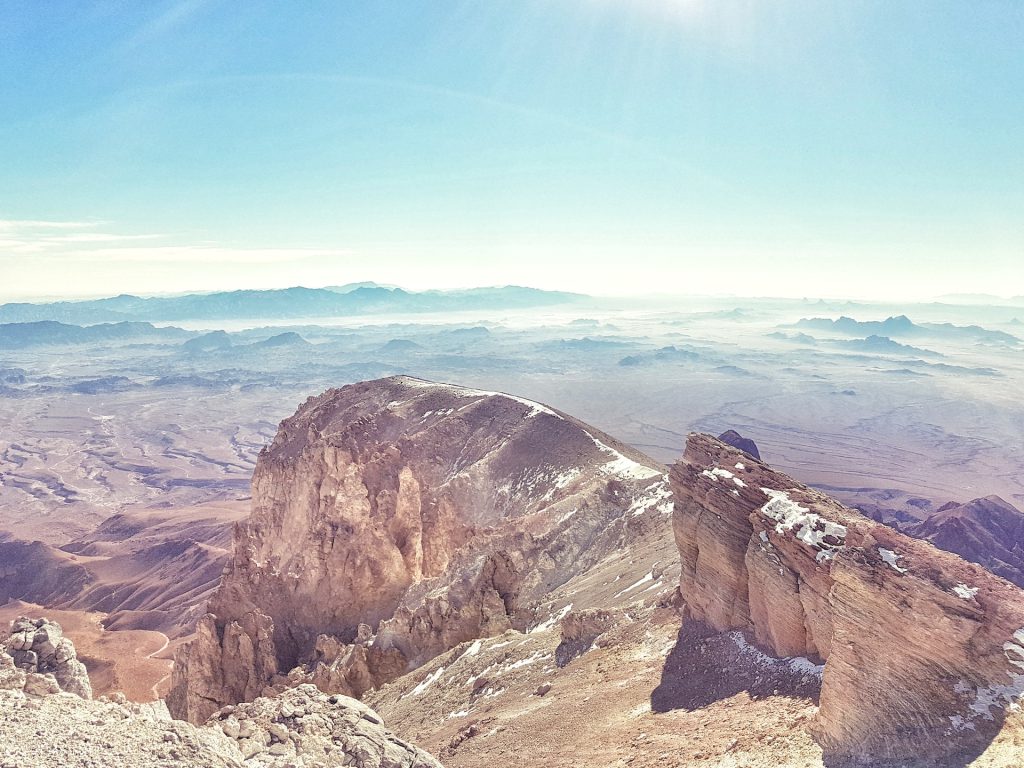
To conquer Taftan, options abound: 1. The shelter route (western face), 2. Torshab Village (eastern face), 3. Tamin Village (northern face), and 4. Sangan and Khanjak village crossing (northeastern face). Mountaineers often favor the western route, complete with a shelter. The journey begins at Darreh Gol Village near Khash, leading to the Sobh shelter. From there, a 3 to 4-hour hike unfurls to the summit.
While attainable year-round, spring and fall shine as optimal seasons. Harsh winter winds render winter ascents daunting. Embrace the challenge of Taftan’s heights amidst the scorching spirit of this top Iran mountain.
Worthy of Mention: A Tale of Alborz and Zagros Mountain Range
Mountain ranges in Iran are as diverse as its landscapes. The Alborz range stretches along the northern part of the country, while the Zagros range spans across the western and southern regions. Both ranges offer spectacular views, challenging climbs, and unique experiences.
Alborz Mountain Range
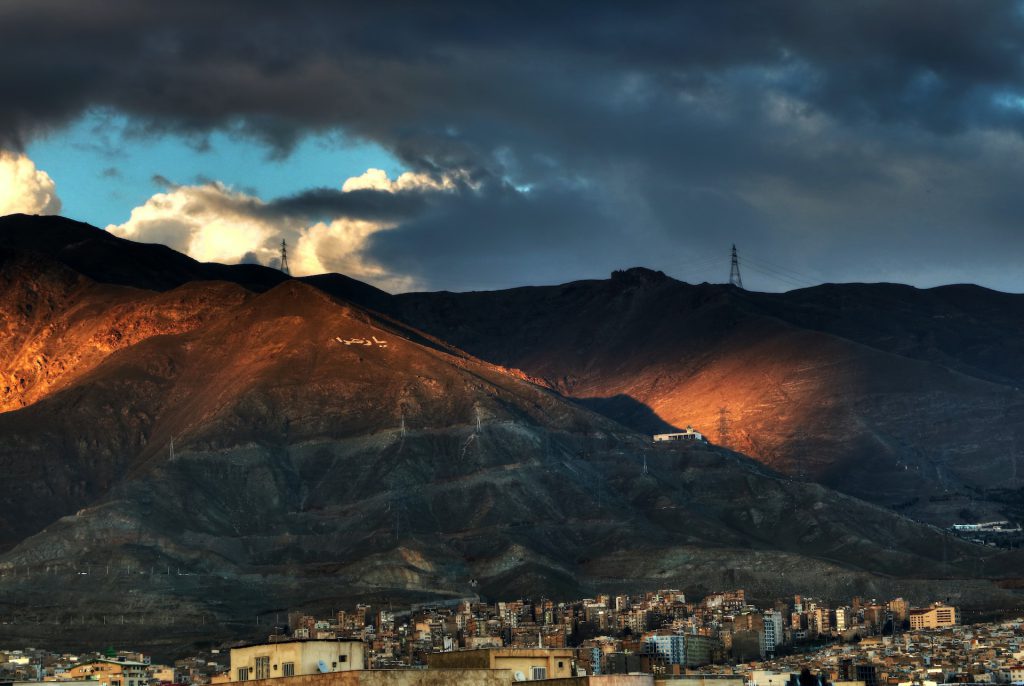
The Alborz or Elborz Mountain range extends about 600 miles (970 km), forming a gentle curve along the southern Caspian Sea. It stretches from Iran’s northwest in Azerbaijan province to the northeast’s Aladak Mountains. This range acts as a climatic divider, protecting the lush north from the Caspian’s influence. The north receives ample snow and rain, while the south features dry, barren slopes and deserts.
Zagros Mountain Range
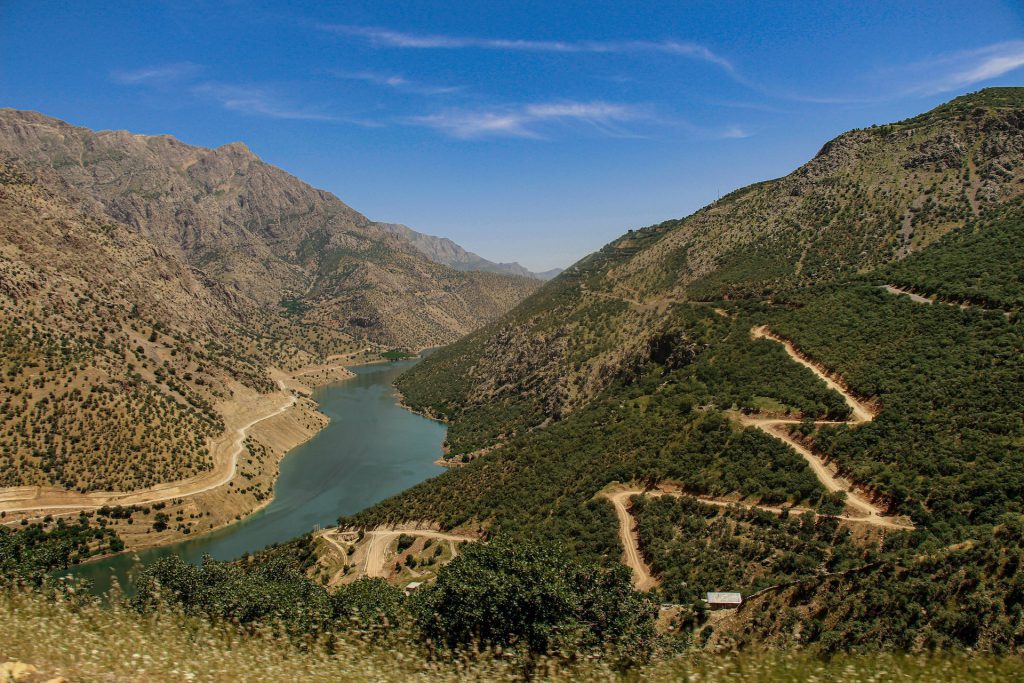
The Zagros Mountain is a 1500-kilometer-long range that runs along the western and southern parts of Iran. It’s a vast and rugged terrain, with peaks ranging from 2000 to over 4000 meters. Dena, Shirkuh, Zard Kuh, and Oshtoran Kuh are the most popular mountains in the Zagros range. Iran adventure tour operators can help you plan your trip and experience a premium version of Iran’s mountains for skiing and climbing.
FAQs about the Top 10 Tallest Mountains in Iran
Q1: Is Iran a mountain country?
A1: Iran’s landscape is made up of rough, hilly edges that encircle elevated flat areas inside. The primary chain of mountains is called the Zagros Mountains. These are a sequence of similar mountain ridges mixed with open flat areas that cut across the country from the northwest to the southeast.
Q2: Does Iran have mountains?
A2: Iran’s elevated central area is enclosed by a sequence of large, extensively worn-down mountain ranges. The majority of the nation is situated over 1,500 feet (460 meters), and about one-sixth of it is higher than 6,500 feet (1,980 meters). The coastal zones outside this mountainous circle present a distinct difference.
Q3: How many mountains are in Iran?
A3: Iran has around 41,788 named mountains. Much of the country is situated at a height of 900 meters above sea level or higher.
Q4: What are the major mountains in Iran?
A4: The tallest mountains in Iran are Damavand, Alam-Kuh, Sabalan, Takht-e Soleyman, Azad Kuh, Zard-Kuh, and Shir Kuh. These are the names of some mountains in Iran.
Q5: What is the highest mountain in Iran?
A5: Damavand is the tallest mountain in Iran and the highest volcano in the Middle East. Many people like to go hiking, climbing, and skiing in the mountains and the areas around them.
Q6: What is the second-highest peak in Iran?
A6: Alam-Kuh is Iran’s second tallest mountain. It’s in the middle of the Alborz mountain range, just 40km south of the Caspian Sea. Alam Kuh is in the Takht-e Suleyman mountain group. People can enjoy skiing, mountain climbing, or hiking here throughout the year.
Q7: Are mountains in Iran suitable for climbers and adventurers?
A7: Yes, from experienced climbers tackling challenging peaks to beginners seeking new challenges, there’s something for everyone.
Q8: Which is the most beautiful mountain in Iran?
A8: Mount Damavand. It is easily seen from Tehran when the sky is clear. It remains covered with snow throughout the entire year and holds a significant place in Persian stories and literature. Found in the Alborz Mountain range, it will require almost two days to reach the top of Damavand. Accomplishing this feat will garner you the lasting admiration of any Iranians in your circle.
Experiencing the Majesty of Top 10 Tallest Mountains in Iran through Customized Tours
If you’re eager to explore the stunning mountains of Iran and want a special experience, consider going on a Customized Tour. Iran has some of the highest and most beautiful mountains, making it a paradise for people who love nature and adventure. To truly enjoy the majesty of Iran’s Top 10 Tallest Mountains, it’s a great idea to travel with experts who understand your preferences and needs.
This is where To Iran Tour comes in – we’re the experts in creating amazing Iran Tours and Travel Packages that are designed just for you. Our team loves exploring and knows Iran inside out. We’re here to guide you through the amazing landscapes, different cultures, and incredible mountains of Iran. Your journey to Iran’s Top 10 Tallest Mountains starts with us – we’re here to make your adventure unforgettable and full of wonderful memories.

